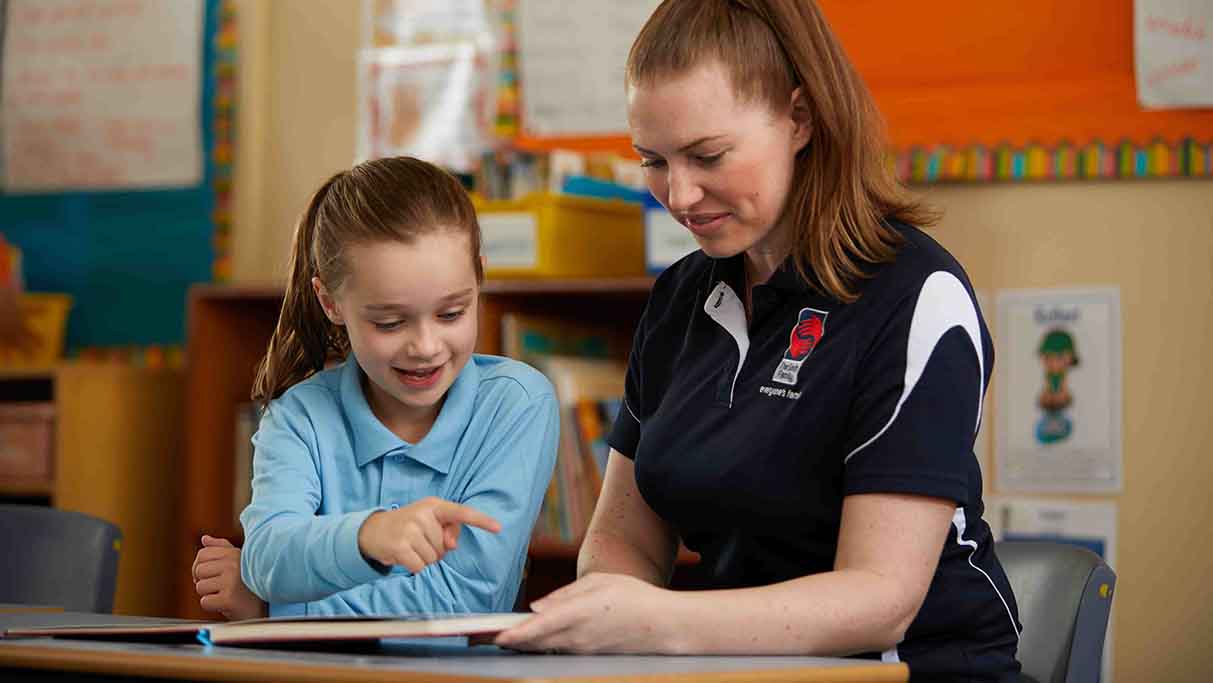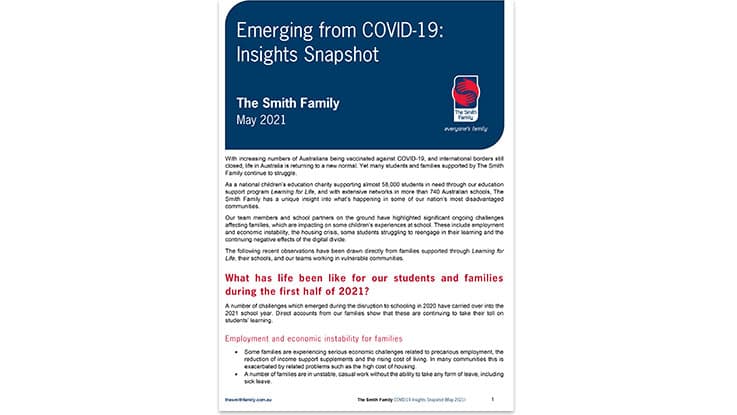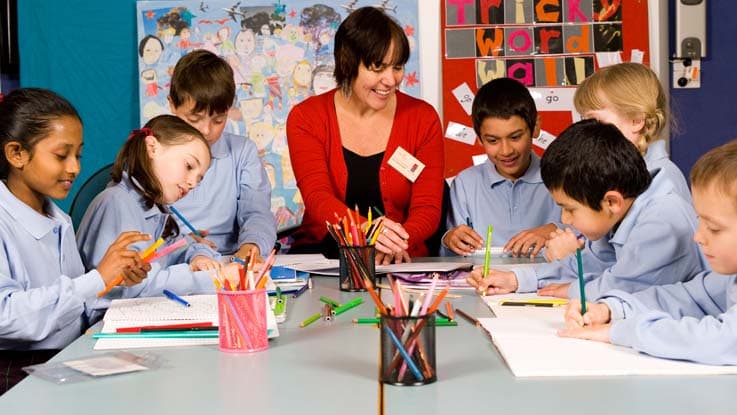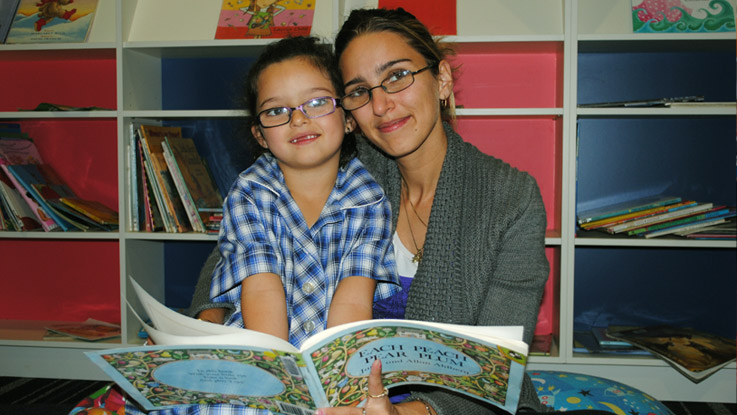
Emerging from COVID-19: our new insights snapshot
With increasing numbers of Australians being vaccinated against COVID-19, and international borders still closed, life in Australia is returning to a new normal. Yet, many students and families supported by us continue to struggle.
As a national children’s education charity supporting almost 58,000 students in need through our education support program Learning for Life, and with extensive networks in more than 740 Australian schools, The Smith Family has a unique insight into what’s happening in some of our nation’s most disadvantaged communities.
Our team members and school partners on the ground have highlighted significant ongoing challenges affecting families, which are impacting some children’s experiences at school. These include employment and economic instability, the housing crisis, some students struggling to reengage in their learning and the continuing negative effects of the digital divide.
The following recent observations have been drawn directly from families supported through Learning for Life, their schools, and our teams working in vulnerable communities.
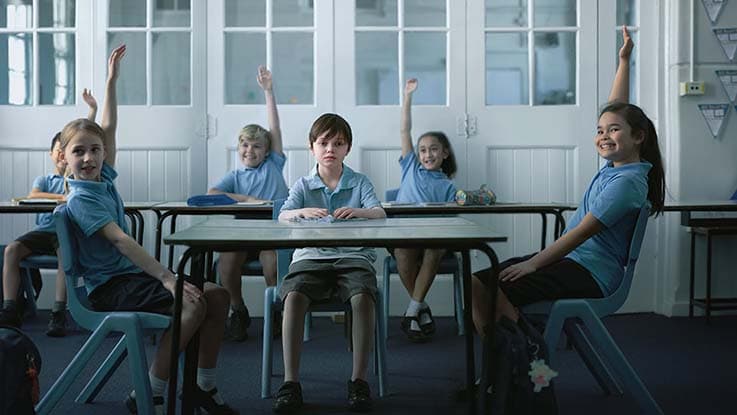
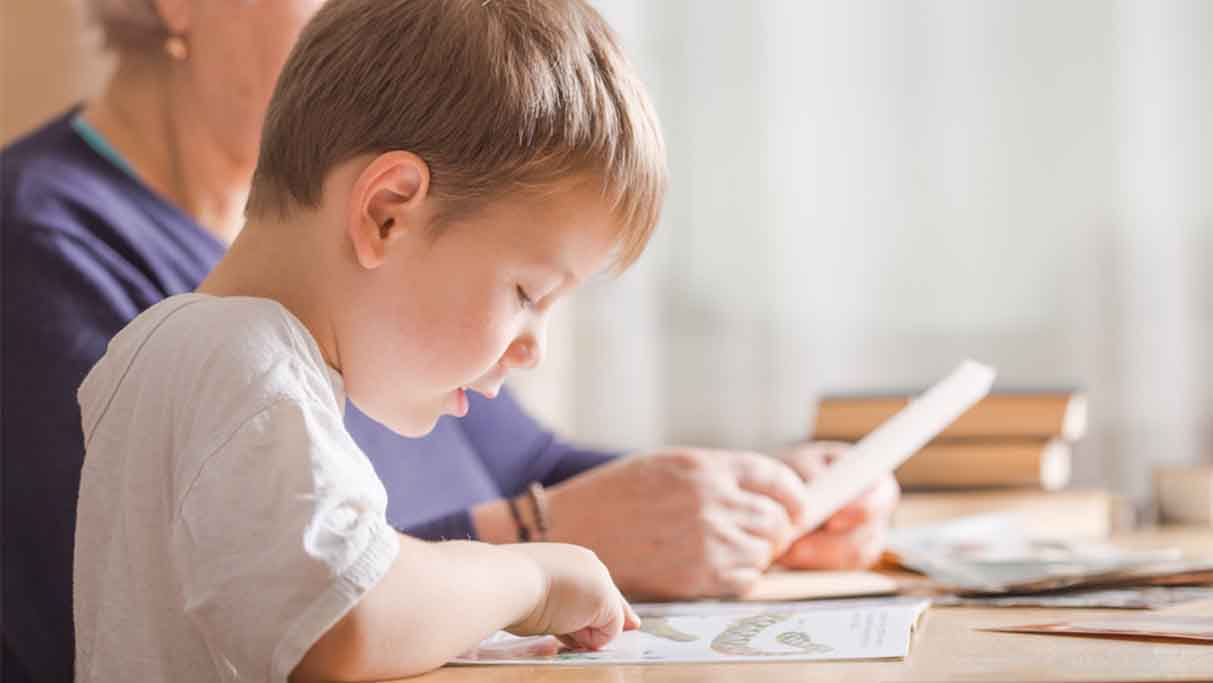
Life during the first half of 2021
A number of challenges which emerged during the disruption to schooling in 2020 have carried over into the 2021 school year.
Direct accounts from our families show that these are continuing to take their toll on students’ learning.
As dedicated supporters of The Smith Family, we wanted to update you on how our students and families are faring this year.
With your help, we will continue to stand by their sides – supporting them to navigate the impacts of this pandemic on their education.
Employment and instability
Some families are experiencing serious economic challenges related to precarious employment, the reduction of income support supplements and the rising cost of living. In many communities, this is exacerbated by related problems such as the high cost of housing.
- A number of families are in unstable, casual work without the ability to take any form of leave, including sick leave.
- The end of the income support Coronavirus Supplement in March coincided with the end of the mortgage freeze, which our team members say for some families, led to rent increases. This has meant that some families who were in secure housing were forced out of their homes and had to stay with friends, camp, sleep in cars or move to a different area, meaning children have to go to different schools and start all over again.
- With last year’s temporary increase in income support payments, families were able to afford more supports for children, such as additional equipment, specialist appointments and essentials needed for school, including uniforms, schoolbooks, and digital devices.
- It’s not yet clear the full extent to which the end of the Coronavirus Supplement will affect many Learning for Life families.
- More children are taking on adult responsibilities from a young age to support adults living in exacerbated financial disadvantage. Some secondary students who are old enough and able to get part-time work have done so because of a fear in their families of becoming homeless, in instances where their primary carer may have lost income or may be in insecure work. This was also a pre-pandemic experience related to poverty.
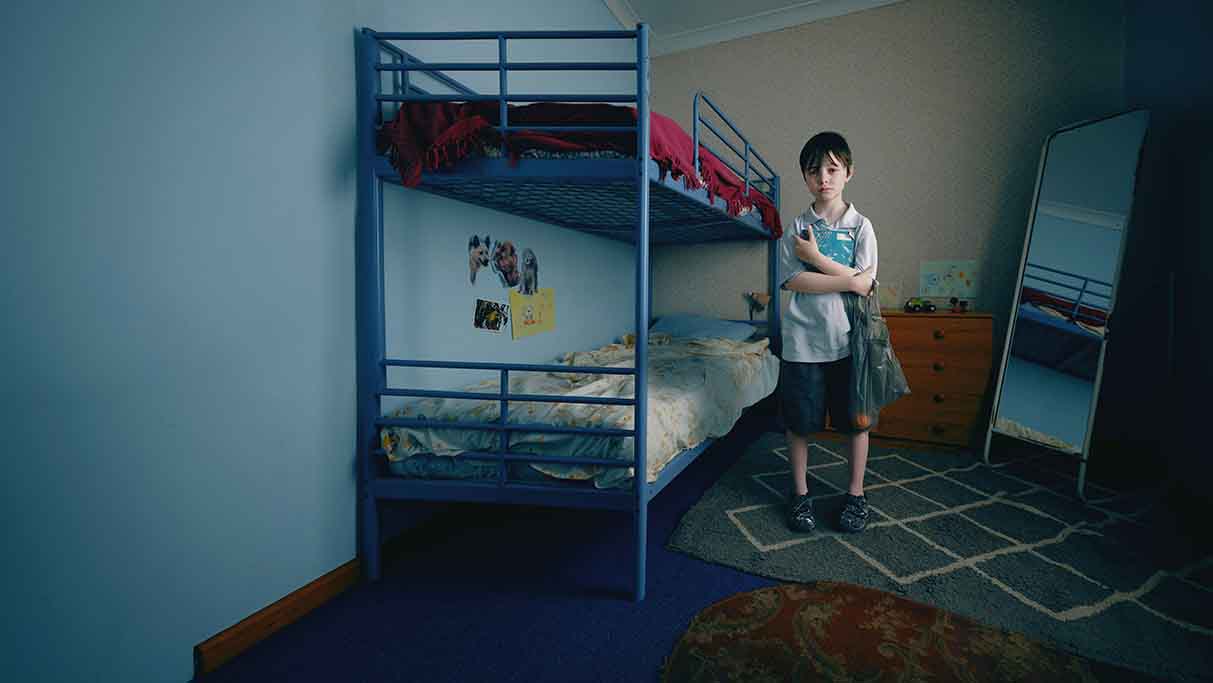
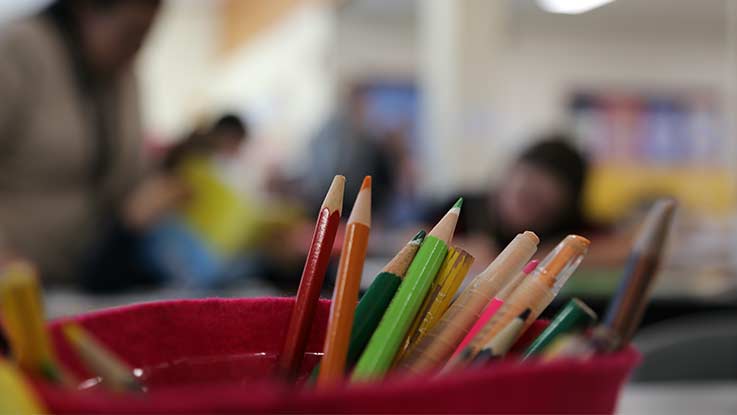
Stress from parents has a big impact on children’s ability to settle into their education. Overlay health and housing issues, and everything else that was going on before the COVID-19 crisis happened, and the compounding challenges can make it impossible to make education a priority. Even if attendance is good, the weight of challenges facing a child make it very hard to concentrate at school. Some students still go to school because it’s a safe space. But if they’re tired, hungry, or unable to concentrate because they’re worried about their family’s circumstances, they fail to engage and their attendance drops off, especially for older students.
The housing affordability crisis
Many communities across the country are experiencing significant housing stress. This includes a lack of access to affordable housing, precarious renting circumstances and homelessness for certain families, leading to increased mobility of children and compounding instability.
- With prices going up, properties are increasingly no longer affordable for Learning for Life families. With rental properties becoming more popular as people leave larger metropolitan areas and head to the regions, this leads to rental stress for low-income families.
- Our team members and partners have observed students needing to move schools due to family relocations because of the high cost of housing, with some families contemplating splitting children across the homes of different relatives in the short term.
- Young people living in insecure housing sometimes have a lower school attendance rate. Those who do attend school are not as well-rested and can be less able to concentrate. There is a notable link between school disengagement and educational achievement.
- Some schools say they are also feeling the impact of a more transient community. For example, when a student with a disability leaves, the school loses the associated funding, and therefore, their additional teaching aides.

One Smith Family supported single-parent family with four children in Years 8, 9 and 11 had to leave their home in October last year, as the homeowners were returning to live there.
By February, the mother had put in more than 300 rental applications. Her Year 11 children were able to remain at the same school by going to stay with their godfather. The two younger siblings had to move out of area to stay with an aunt and attend a new school.
The mother sought housing in regions that were affordable for her, if possible, where her youngest are now attending school so as not to cause them further disruption.
After couch surfing since October, staying a few days at a time with each of the children, in between staying with one of her friends, she finally found a home six months later.
The experience of house hunting was daunting. The mother also has significant health concerns requiring multiple operations, and this has also affected her children’s mental health.
The housing crisis is being felt most acutely in regions that have seen significant population growth as a secondary impact of COVID-19, with many Australians relocating to regional areas or transferring interstate to be closer to their families.
Examples of hard-hit areas highlighted by our team members include:
- Sunshine Coast families being offered housing in faraway Blackwater (700km away), due to a lack of housing in their community.
- One of our support workers in a regional Queensland town supporting 15 families who are living in cars, with a similar number couch surfing or living in garages, or caravan parks.
- Another Queensland family has been asked to leave crisis housing. This family has a primary carer requiring transfusions, a young child with special needs, and two other children. They are in crisis housing due to domestic violence and have nowhere else to go. More families are reporting as homeless on the Gold Coast, with several living in cars or couch surfing.
- In Darwin, housing prices increased significantly in a short period of time, causing an affordability issue not previously seen. A lot of families in remote communities also ended up in Darwin during the wet season, with some choosing not to return after the wet season ended. Similarly, a lot of families are living precariously and camping in bush areas near larger urban centres.
Nationwide, there is an increase in families moving in with relatives or experiencing “hidden homelessness.” There is a high level of shame surrounding this, which inhibits disclosure and accurate data collection. Families experiencing these situations often show incredible resilience. In one regional Victoria community, the dux of the school was homeless three times during 2020 and living with her mum in their car for part of the year. Yet, she still managed this remarkable educational achievement.
Impact of COVID on school attendance and engagement
Our team members and school partners report that, on the whole, students around the country have re-engaged well in school this year. Those who are struggling to re-engage generally had low school attendance prior to COVID-19.
- Some students who were somewhat disengaged in their learning prior to the pandemic have become completely disengaged. In certain communities, it is likely to be a slow and long process of re-engaging students in their education.
- Groups who have resisted returning to school and/or struggled to re-engage with school are more likely to be students who struggled with bullying pre-pandemic, students with behavioural issues or disabilities, and students in senior secondary who did not have a clear pathway planned for when they finished school.
- Some students who did well with home-schooling are struggling back at school. Some students had very high levels of anxiety going back to school and have a higher instance of being absent or late. A few families have applied for distance learning as the students did not want to go back to school.
- In parts of the country, Smith Family support workers have observed they are continuing to see a lot of school disruption due to custody issues, which, anecdotally, they’re noticing more of since the pandemic.
- Increased family mobility and changing of schools for students, due to the housing affordability crisis, has made it difficult for some students to settle into the new school year and, in some instances, led to increased family conflict and domestic violence.
- All over the country, schools are asking students to stay home if they have any cold or flu-like symptoms, and this is having an ongoing detrimental impact on students’ engagement and attendance. Instances being seen are where whole families stay home as one family member is unwell. The cumulative impact on attendance can be huge.

- The impact of home-schooling has been felt the most in Victoria, as the state that had the longest lockdown and time away from the school environment. Many students have fallen behind in their learning, and some have continued home-schooling or completely disengaged. Some have reported the impact of the lockdown on Year 8 students in Victoria. These children have not had the benefit of Year 7 to adjust to the new high school environment and are having difficulties settling into their new school’s culture.
- For Aboriginal and Torres Strait Islander families in one of our communities in Victoria, there are complex challenges to manage. The snap lockdowns created anxiety for them, especially in situations where children are living in out-of-home care. There are ongoing concerns about the possibility of further lockdowns and remote learning periods, and possible changes to school policies about whether parents are allowed on campus.
- In Victoria and New South Wales, tutoring support (funded through the Departments of Education) is now being made available for students who need support to help them catch up on learning from last year. It’s yet to be seen how well this will help students to do this.
- Despite all the challenges of 2020, many schools report their exiting Year 12 students did very well. Year 12 students who graduated in 2020 were given intensive support to enable this achievement, but as a result, there is concern that Years 10 and 11 have missed out, and in some cases, their learning outcomes are feared to have dropped significantly in 2021.
- Years 1 and 2 in primary are also vulnerable, and some Year 1 children haven’t yet learnt the expected fundamentals of reading. Teachers are now focused on thinking about what extra support these children are going to need over time.
- COVID-19 has also resulted in a nationwide teacher shortage, with many schools in communities where The Smith Family operates struggling to attract teachers. Many teachers re-assessed their priorities during the pandemic and left the profession or reduced their hours. This shortage is creating further disruption and a lack of consistency in affected students’ learning.
- We will have quantitative information to help better understand how far some groups of children have fallen behind in 2020 when we see NAPLAN results over the coming months.
One Smith Family supported student fell behind because they struggled to keep up during remote learning.
The previously A-grade student fell to a C-grade because they fell behind in their remote studies.
The student ended 2020 with a B-grade average, through a lot of hard work and support.
Now in 2021, she has caught up and is again an A-grade student, which is testament to her resilience.
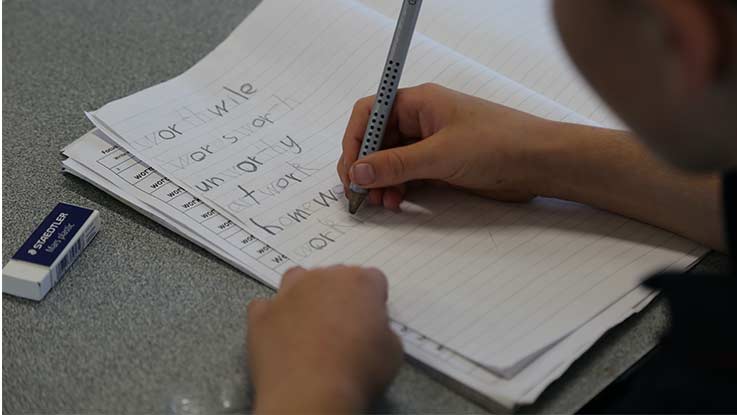
The ongoing impact of the digital divide
Families are having ongoing issues with digital access, including a lack of access to devices, internet data and technical support and/or training.
- Many parents and students have been reporting stress around access to digital services and accessing schoolwork over the last 12-16 months.
- Some families and students feel guilt or stigma about not being able to bring their own device to school. There is concern that these students are missing out on learning.
- Several schools already have Bring Your Own Device policies and are further digitising their learning packages. Some schools have loaded software packages onto devices for students. Some have a small selection of spare iPads and laptops for children who do not have their own device.
- In certain schools, there is an expectation that students can do their homework using their own device. Some schools still have a limited number of paper-based assessments and packages for children without any access to a device, but this is becoming the exception. In some areas, schools are not providing spare devices now, stating that they cannot afford to do so on an ongoing basis.
- In some school communities which didn’t switch to digital learning during the lockdown and instead remained paper-based, many students struggled to keep up with schoolwork and fell very far behind. There is a big lag in engagement at these schools, and concern they will remain behind.
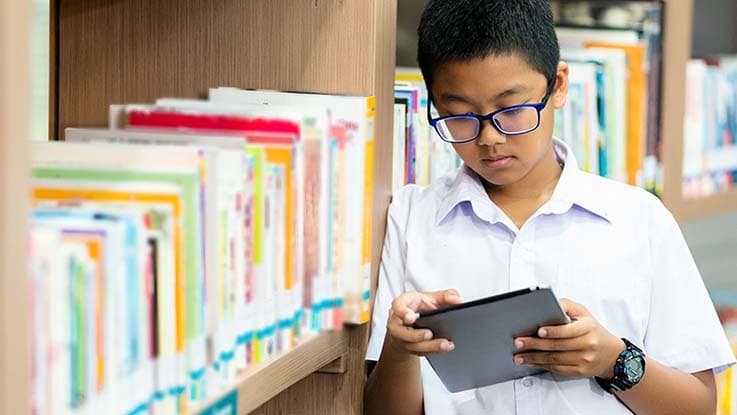
Across the board, families who had pre-existing high levels of digital literacy, access to devices and the internet and no additional barriers, such as a child with a disability, generally managed well during the pandemic.
In many communities, parents and carers have insufficient skills to help students get online and learn, and often there are literacy, and digital literacy, issues for both students and parents.Teachers and schools have taken time to understand how far behind certain students are after remote learning last year and say that even when there was a device at home, in some cases, it was not being used and/or sufficient guidance was not being provided for its use by parents and carers.
The impacts on mental health
Our team members and school partners say that some students who had mental health issues before COVID-19 have had these issues escalate.
- Across the country, the children who struggled most with returning to school are those who have previously experienced bullying or have a diagnosis such as autism, anxiety, or depression. The return to the highly social and often confronting school environment has been difficult for them.
- A number of schools have observed a real gap in students’ socialisation, including self-regulation and an understanding of school culture, following the disruption of 2020.
- In some schools, this disconnection has resulted in increased violence in the schoolyard, which school principals say is a major concern.
- Anxiety about future jobs is high among older school students. The competition to gain relevant work experience is tough.
- Compounding pressure on families affects students’ ability to settle into their education. For example, after observing the stress her mother is under, one daughter wants to stop attending high school so she can stay home and support her mother and younger siblings.
- In some instances, students are concerned that COVID-19 may come back. There are also parents with this fear, which has been transmitted to their children. Our team members and school partners say this seems to be more common among high school students, rather than primary school students.
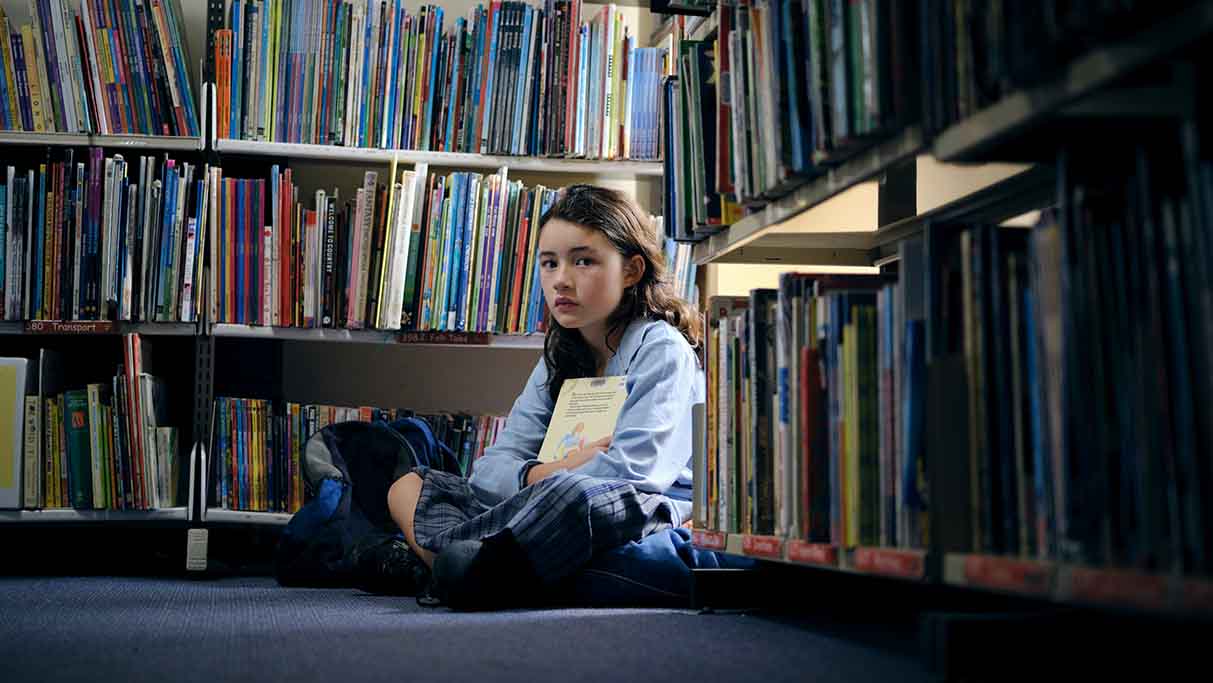
The impact on our tertiary students
A large number of first-year students in 2020 only had two weeks on campus before study went online. It was very difficult for them to get support and form networks, and this has taken its toll on some students’ mental health.
- Many students failed subjects when study moved online. Universities were flexible and allowed grades not to go onto students’ academic records, but it has still had an impact on confidence.
- Many students are unsure about their career plans resulting in an increase in the number of students taking time off to assess their options. Many tertiary students seem to be suffering from “post-lockdown burnout”. Victoria saw a lot of students withdraw from study early in the semester.
- With more deferrals, tertiary study will last longer. This has both financial and emotional implications for students.
- Other students are pursuing their preferred courses despite the risk of a lack of job prospects (e.g. event hospitality) and/or an increase in fees.
- A higher proportion of Aboriginal and Torres Strait Islander students have taken up Smith Family tertiary scholarships this year and enrolled in universities (81 students in 2019 to 108 students enrolling in 2021).
- Some students who completed undergraduate studies last year have chosen to go on to further study because of a lack of job opportunities.
- Many students were unable to secure part-time/flexible work last year. Finding work is somewhat easier this year, with some students managing to now pick up more work, including night shifts, to support their families.
- Many students are waiting long periods to access counselling due to increased demand. There is increased anxiety about future jobs, particularly a perceived lack of corporate jobs, with concern many people are working from home so are unable to offer training opportunities to students.
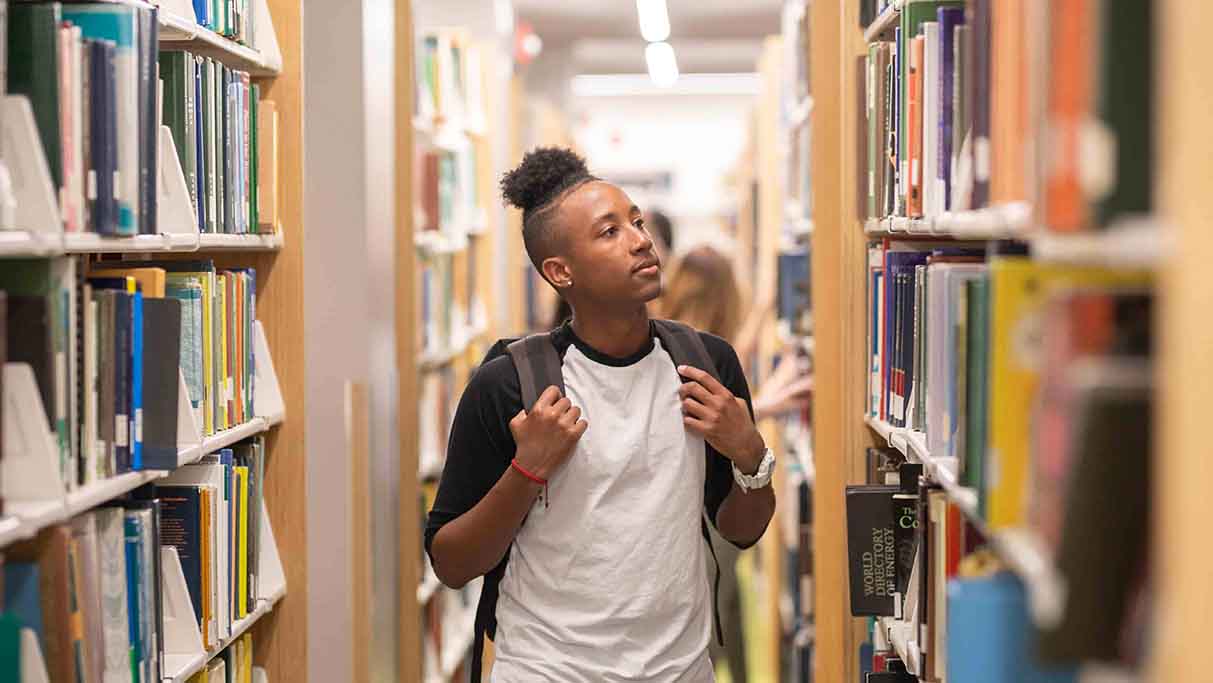
Increase in requests for our support
Team members in some areas have noticed an increase in requests from schools to become Smith Family partner schools, so that our support can be provided to students in need.
- There have been more requests from our partner schools to be allocated more Learning for Life scholarships – so that more students in the school can be supported.
- One family support worker noted that in her ten years working at The Smith Family, she has never seen so many families looking for support. This impact is being felt across all community services, all of which seem to be at full capacity.
- At recent community services meetings, the message was clear that there is not enough support to go around, with community sector organisations all asking the question, “what can we do?” The waitlists for support are increasing, and community services organisations are at bursting point.
- Many communities have seen a notable increase in families experiencing food shortages.
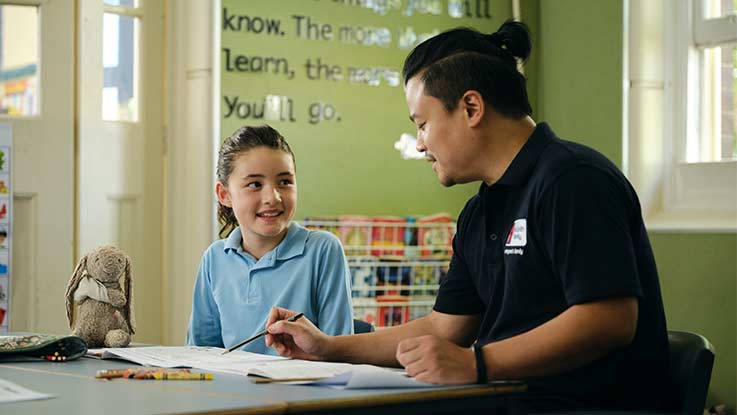
Schools understanding our families’ needs
Many schools in communities where The Smith Family works have been regularly supporting families, reaching out to better understand the complexity of their different needs. Families are benefiting from, and appreciating, this engagement. The improved relationship between families and the schools will benefit communities long into the future.
- Schools now have a heightened sense of the complexity of families’ situations after last year, and in certain areas, some additional staff have been made available to focus on parental engagement.
- In an effort to better engage with families and learn more about their situations, some schools implemented strategies such as hiring staff, including Community Liaison Officers, to interact with parents/carers and better understand the pressures they’re facing.
- A lot of schools are organising more regular catch-ups between parents/carers and school counsellors or other staff.
- In Victoria, schools are being more proactive in focusing on student welfare. Students with anxiety issues and other challenges are coming back to school and are being supported by additional staff. Families are proactively asking for this support and feeling more confident in engaging with school.
Because parents oversaw their children’s schoolwork during lockdowns, they are more aware of their learning strengths and challenges. As a result, there has been an increase, for example, in - the number of parents interested in getting their children involved in The Smith Family’s reading support program Student2Student.
Some students progressed further in their education because they benefited from having the one-on-one support of their parent during the lockdown, but conversely, without that support, some fell behind. - Families are also taking the digital world more seriously and investing in devices wherever possible and where affordable. Some have improved their digital skillsets, self-taught during the extended lockdown last year.
Final Observations
The consensus from our team members and school partners who have contributed to this Snapshot is that they are concerned that, for some families and students supported by The Smith Family, the negative repercussions of the pandemic are still unfolding, and things may get worse before they get better.
- Accessing NDIS and Centrelink support remain big issues for families, as the process to access support is complex and lengthy.
- Domestic violence is a major concern. This increased at the start of the pandemic and doesn’t yet seem to be in decline.
- There is an increased burden on migrant families, particularly those who’ve come from countries hard hit by COVID-19. Many migrant families seem to have a greater fear of the virus. Many are also financially supporting family overseas, who are living in countries with far worse COVID-19 situations.
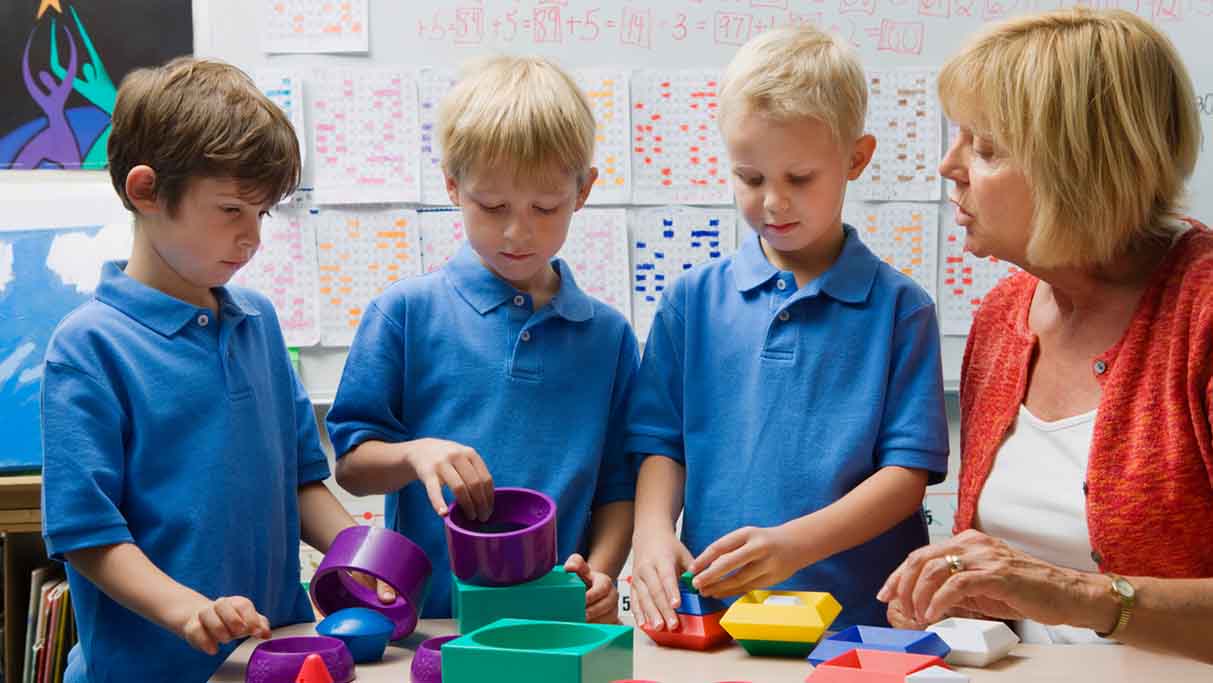
Responding to COVID-19
When COVID-19 emerged here in Australia, our key priority was to support the young Australians already on our Learning for Life program.
We immediately developed a COVID-19 Response and Recovery Plan, and reached out to you, our dedicated supporters, to secure our current funding and seek new funding to help our students and families through the crisis. Thanks to your generous support, we:
- Accelerated the digitisation of programs suited to remote learning, and expanded the delivery of our existing online learning and mentoring programs to reach more students remotely;
- Undertook the Family Experience research project, which used in-depth surveys and interviews to investigate how our families were faring and determine how we could best support them;
- Delivered digital devices, internet access, and technical support where possible, to assist students without an internet-connected device at home, so they could continue with their studies; and
- Developed our online portal to make it easier for our families to communicate with us and seek assistance.

Thank you for your vital support
We are continuing to monitor the impact of the pandemic on our students and families across the country, through feedback from our teams on the ground, calls to our Family Hotline and through our partner schools.
Despite the many challenges during this time, it’s been so heartening to witness the strong sense of unity, compassion and community spirit shining through.
And that extends to you – our committed and generous supporters. We can’t thank you enough for staying the course and continuing to be there for these vulnerable young Australians.
We’re not going to rest while there are still children out there who need our help, and we can’t do the work we do without you!
So thank you once again for your unwavering support. Together, we‘re giving more young Australians the chance to create a better future for themselves.
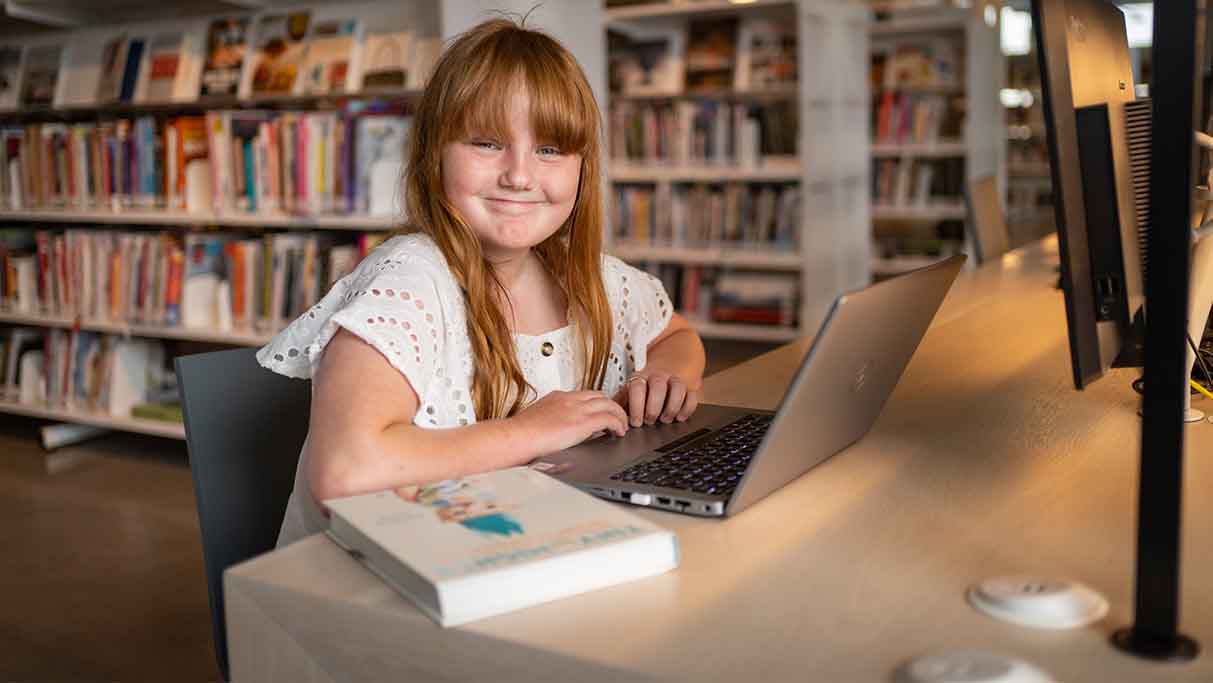
When I didn’t have the things that I needed for school, it really made me feel like I wasn’t worth it. Getting help from The Smith Family improved my reading, writing, and everything. I want to be a doctor because I want to be able to help people. If I don’t help people, then who’s meant to help me?
